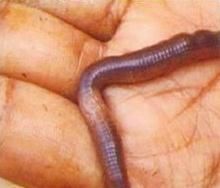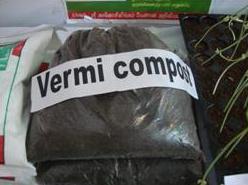. Introduction
Earthworms have been around for more than 20 million years. Throughout this period, they have faithfully done their share to keep the circle of life rolling. Their mission is straightforward but critical. They are nature’s method of returning organic nutrients from dead tissues to living organisms. Many people have recognised the importance of these worms.
. Materials for preparation of Vermicompost
Any types of biodegradable wastes-
- Crop residues
- Weed biomass
- Vegetable waste
- Leaf litter
- Hotel refuse
- Waste from agro-industries
- Biodegradable portion of urban and rural wastes
Bedding
Bedding is any material that provides the worms with a relatively stable habitat. This habitat must have the following characteristics:
High absorbency
Worms breathe through their skins and therefore must have a moist environment in which to live. If a worm’s skin dries out, it dies. The bedding must be able to absorb and retain water fairly well if the worms are to thrive.
3. Vermicompost Production Methodology
i) Selection of suitable earthworm
For vermicompost production, the surface dwelling earthworm alone should be used. The earthworm, which lives below the soil, is not suitable for vermicompost production. The African earthworm (Eudrillus engenial), Red worms (Eisenia foetida) and composting worm (Peronyx excavatus) are promising worms used for vermicompost production. All the three worms can be mixed together for vermicompost production. The African worm (Eudrillus eugenial) is preferred over other two types, because it produces higher production of vermicompost in short period of time and more young ones in the composting period.

ii) Selection of site for vermicompost production
Vermicompost can be produced in any place with shade, high humidity and cool. Abandoned cattle shed or poultry shed or unused buildings can be used. If it is to be produced in open area, shady place is selected. A thatched roof may be provided to protect the process from direct sunlight and rain. The waste heaped for vermicompost production should be covered with moist gunny bags.

Nutritive value of vermicompost
The nutrients content in vermicompost vary depending on the waste materials that is being used for compost preparation. If the waste materials are heterogeneous one, there will be wide range of nutrients available in the compost. If the waste materials are homogenous one, there will be only certain nutrients are available. The common available nutrients in vermicompost is as follows
| Organic carbon | : | 9.5 – 17.98% |
| Nitrogen | : | 0.5 – 1.50% |
| Phosphorous | : | 0.1 – 0.30% |
| Potassium | : | 0.15 – 0.56% |
| Sodium | : | 0.06 – 0.30% |
| Calcium and Magnesium | : | 22.67 to 47.60 meq/100g |
| Copper | : | 2 – 9.50 mg kg-1 |
| Iron | : | 2 – 9.30 mg kg-1 |
| Zinc | : | 5.70 – 11.50 mg kg-1 |
| Sulphur | : | 128 – 548 mg kg-1 |


